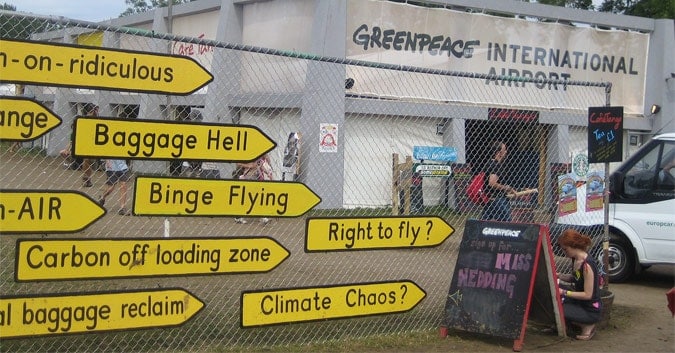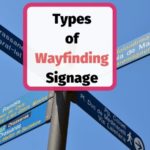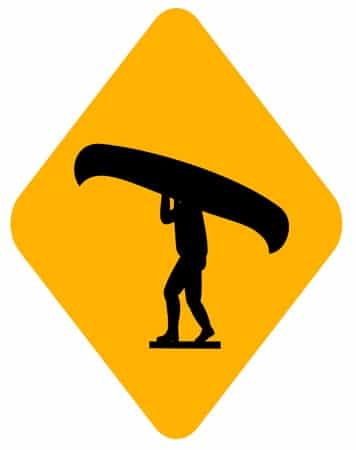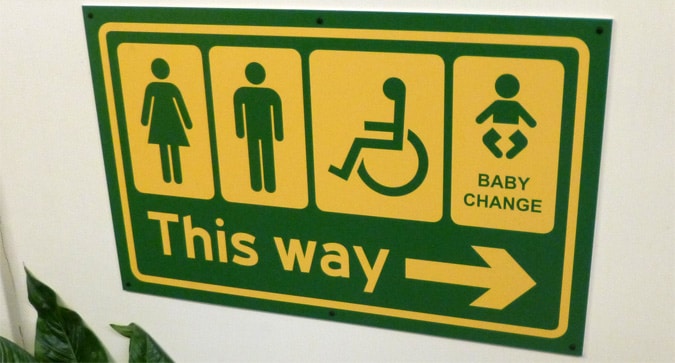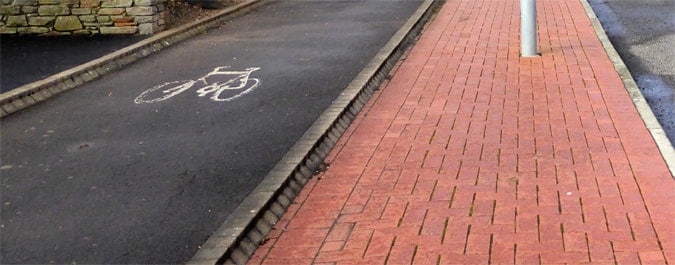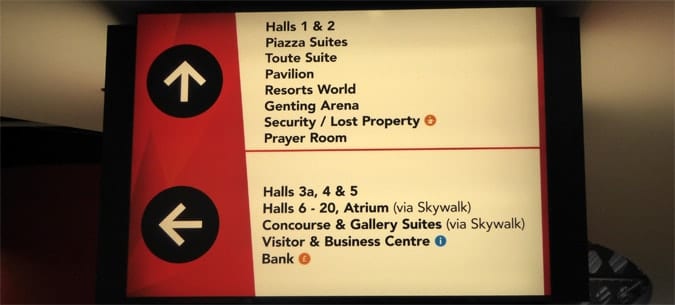Last Updated on June 10, 2023
When you think of wayfinding signage you most likely are thinking of signs that are head height or above. Floor signs though, in some situations, can also be an effective solution and that is worth considering if you need to guide users along complex paths and routes.
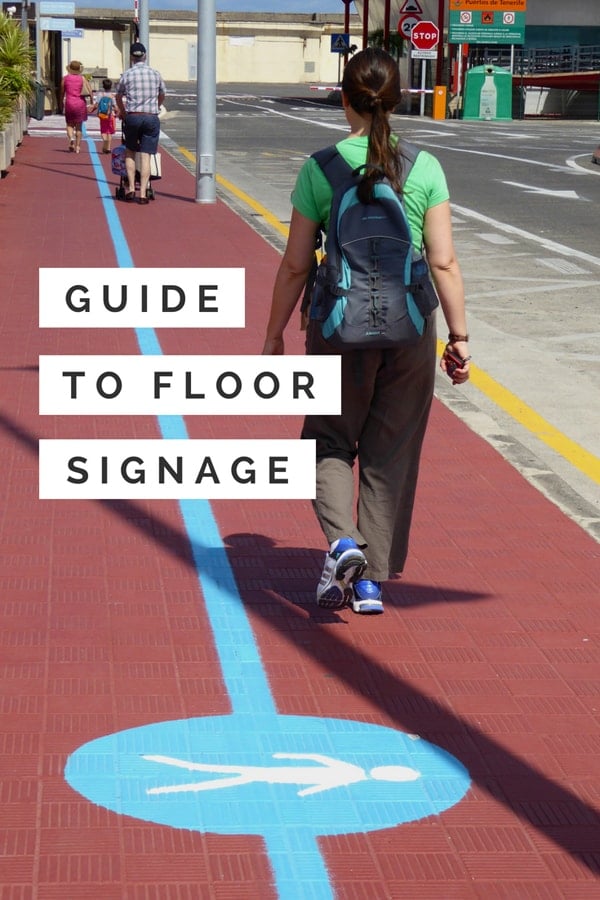
Table of Contents
Watch the Video in Full: Wayfinding and Floor Signage
Using Painted and Taped Coloured lines as Floor Signs
As you might have seen in the post on urban wayfinding, the use of painted lines to lead users on complex routes that have a lot of turns can be an extremely effective method.
The route might be a mile plus for example and involve numerous turns both left and right and such a route can be expensive to create a signage system for. One excellent solution, and which I have seen used in Spain a few times, is the use of painted lines.
You may yourself have seen such a solution used in airports, train stations or in a hospital? They are suitable for some environments but not necessarily the automatic solution.
In indoor environments, such as airports, where the spaces are square or rectangular, the very presence of so many people means that it can often be all but impossible to follow these lines.
Others might block the path or you simply might not be able to see the lines because of the number of people blocking the visibility of the lines.
Indoors, rather than being painted, these lines tend to involve coloured tape.
The problem though of these lines in indoor environments is wear and tear, with shoes (particularly stiletto heals) easily scraping and damaging the lines.
In outdoor environments, these lines can work much better with paint often the best choice and which can easily and tidily be re-applied where lines need to be maintained.
Outdoor routes that are long lengthwise and thus can easily be viewed even whilst others walk the same route and cover parts of the lines, are ideal for this type of wayfinding.
You might also want to consider using these lines AND a signage system (i.e. vertical signage) to work in unison though, depending on the location in question.
Use of Tiling and Tiles as Floor Signage
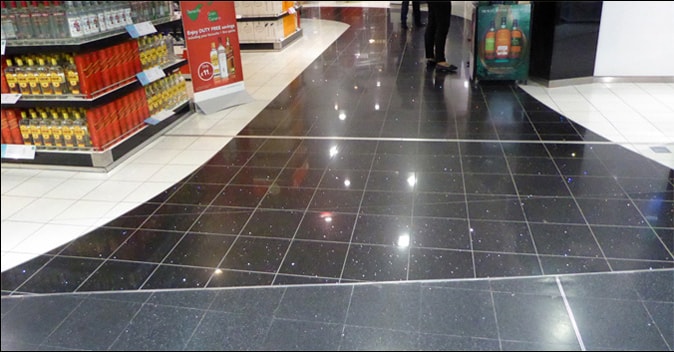
Coloured lines though are not the only way to create easy-to-follow otherwise complex paths.
A very good option that can be implemented is to have the floor designed using tiles that differentiate certain paths by colour.
In the example above from Birmingham Airport, in England, the Duty-Free area has black tiles which act to signify the walking route.
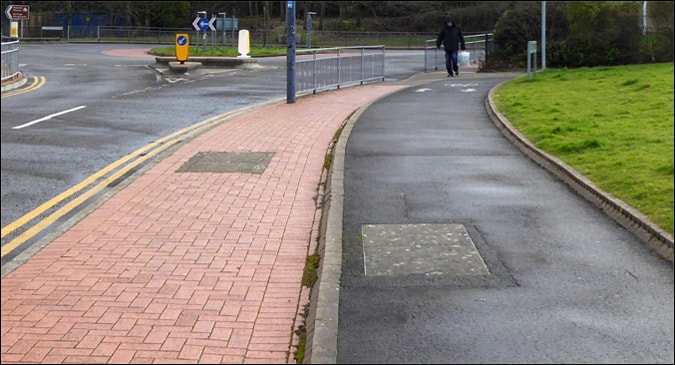
Another example above is from Cardiff, where reddish bricks are used in many locations to signify the pedestrian path, whilst the cyclists’ path is designated by the black path and with images of a bicycle populating the black area every 10 meters or so.
Wayfinding Signage is also needed in some of these outdoor spaces in addition to colour coding, but the use of colours does help, although inevitably you will get some walkers choosing to walk in the bicycle lane and vice versa.
Wayfinding involves humans and thus design features can never accommodate 100% the actions of users. Certainly though, colour is a power tool!
Other Horizontal Floor Signs
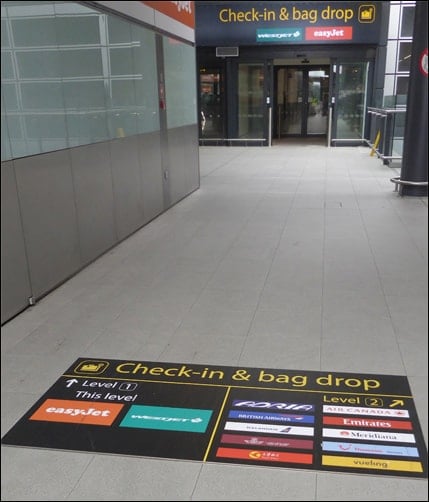
Gatwick Airport (see photo above), in London, has chosen above to use the floor signs also to signify which terminal to go to for the different airlines.
This specific idea I cannot see as being so effective as vertical signage, but it is nevertheless interesting to see the concepts being used in such locations – specifically in an airport where they have spent such significant amounts of money in the last couple of years on wayfinding.
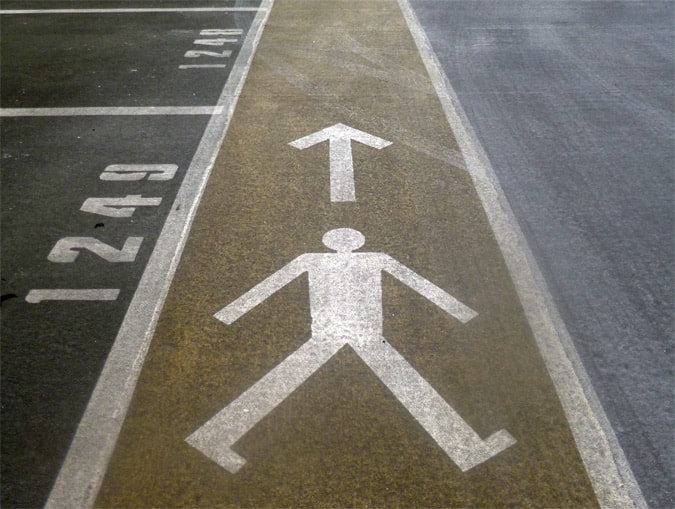
Floor signage can also work especially well for wayfinding in locations such as car parks.
To ensure the safe movement of people in busy car parks is always good practice and clearly marked routes can be a useful aid for those who have parked their car or need to find it.
Maintenance of Floor Signs
One of the big problems with using painted lines and other painted floor signage and of taped navigation lines on the floor is that far too many locations forget that wayfinding is an organic ongoing process.
In other words, these lines and wayfinding markings need maintenance.
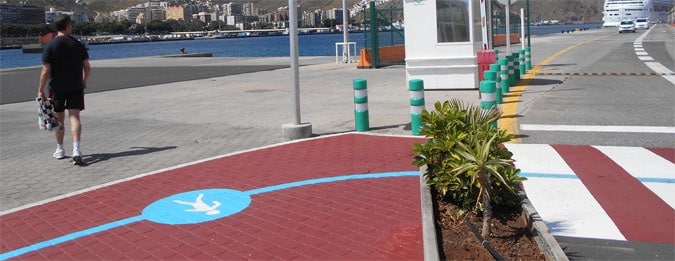
The cost of maintaining these systems though is often inexpensive, with nothing more than a lick of paint needed!
Make sure to have someone check the route regularly and to be assigned the task of checking the system, even if only once a month. For very busy locations though, weekly or even daily can be a good idea.
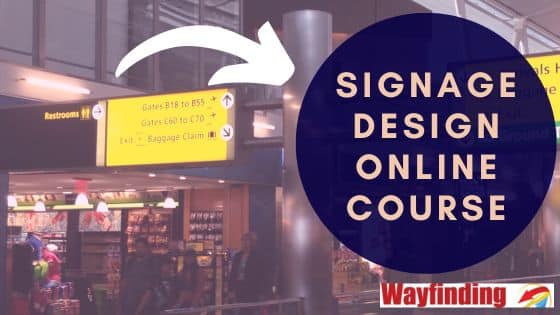
Dr Paul Symonds has a PhD in Wayfinding from Cardiff Metropolitan University in the UK. Paul works with the signage industry, airports and other locations providing wayfinding audits, consultancy and training.

